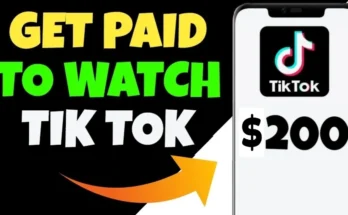How to Earn Money from YouTube: A Complete 1,500-Word Guide
YouTube isn’t just a platform for watching funny cat videos anymore—it’s one of the biggest opportunities in the world for creators to make real income. With over 2.7 billion monthly users, there’s an audience for almost every niche imaginable. Whether you’re a gamer, teacher, entertainer, or storyteller, YouTube offers ways to turn your creativity into cash.
This guide will walk you through everything you need to know about earning money from YouTube—from building your channel to leveraging multiple monetization methods.
1. Understand How YouTube Monetization Works
Before you start filming, it’s important to know how creators actually get paid. YouTube offers direct monetization (through ads) and indirect monetization (through sponsors, products, etc.).
Direct YouTube Earnings usually come from:
-
Ads (YouTube Partner Program)
-
Channel Memberships
-
Super Chat & Super Stickers
-
YouTube Premium Revenue Share
Indirect YouTube Earnings include:
-
Sponsorships and brand deals
-
Selling your own products or services
-
Affiliate marketing
-
Crowdfunding (Patreon, Ko-fi, etc.)
The smartest creators combine multiple income streams instead of relying on just ads.
2. Meet YouTube’s Requirements for Monetization
To officially earn from YouTube’s ads, you must join the YouTube Partner Program (YPP).
Current Requirements (as of 2025):
-
1,000 subscribers
-
4,000 valid public watch hours in the past 12 months OR 10 million valid public Shorts views in the past 90 days
-
Follow all YouTube monetization policies
-
Have an AdSense account linked to your channel
If you don’t meet these yet—don’t worry. You can still earn through affiliate links, sponsorships, or selling products while growing your channel.
3. Pick a Profitable Niche
Not all niches pay equally. Ad rates vary based on audience demographics and topic. For example:
-
High CPM niches (pays more per thousand views): Finance, business, tech, education
-
Moderate CPM niches: Lifestyle, fitness, travel, cooking
-
Lower CPM niches: Entertainment, comedy, gaming (unless combined with sponsorships)
Choosing a niche:
-
Passion + Profit: Pick something you enjoy but also has earning potential.
-
Evergreen Topics: Choose content people will search for year-round.
-
Audience Size: Ensure enough people care about your niche.
-
Competition: Highly competitive niches require unique angles.
4. Create High-Quality, Consistent Content
On YouTube, quality + consistency = growth. Viewers subscribe when they trust you’ll deliver good content regularly.
Tips for Quality Content:
-
Good Lighting & Sound: Clear visuals and crisp audio improve watch time.
-
Strong Hooks: Capture attention in the first 10 seconds.
-
Storytelling: Even tutorials should have a beginning, middle, and end.
-
Editing: Remove boring parts, add captions, visuals, and music.
Consistency:
-
Post on a predictable schedule (weekly or biweekly).
-
Use YouTube Analytics to find the best posting time for your audience.
5. Optimize Videos for Search & Discovery
YouTube is the second-largest search engine in the world. If your videos aren’t optimized, they’ll get lost.
SEO Basics:
-
Titles: Use keywords naturally (e.g., “How to Save $10,000 Fast” instead of “Saving Money”).
-
Descriptions: Include relevant keywords and a summary of your video.
-
Tags: Use targeted tags, but don’t overstuff.
-
Thumbnails: High contrast, bold text, and curiosity-driven images.
-
Playlists: Keep viewers watching more of your content.
6. Monetization Methods in Detail
Let’s break down the main ways to make money from YouTube.
a. Ad Revenue (YouTube Partner Program)
When you qualify for YPP, YouTube places ads on your videos. You earn a share of that ad revenue.
-
CPM: Cost per thousand ad impressions.
-
RPM: Revenue per thousand views (what you actually take home).
Average RPM ranges from $1–$5 for entertainment channels to $10–$30+ for finance/business.
Pro Tip: Longer videos (8+ minutes) allow mid-roll ads, increasing revenue.
b. Channel Memberships
Fans can pay a monthly fee (starting at $4.99) for perks like:
-
Exclusive badges
-
Members-only videos
-
Private live streams
Great for loyal audiences who want closer interaction.
c. Super Chats & Stickers
During live streams, viewers can pay to have their messages highlighted. Popular for gaming, Q&A sessions, and events.
d. YouTube Premium Revenue
When Premium subscribers watch your content, you get a share of their subscription fee.
e. Sponsorships & Brand Deals
Brands pay you to promote their products. This can be more profitable than ads, especially for small channels in profitable niches.
How to Get Sponsors:
-
Reach out directly via email.
-
Join influencer platforms like Grapevine, FameBit, or AspireIQ.
-
Create a media kit showing your audience stats.
f. Affiliate Marketing
Earn commission by promoting products with special tracking links. Works well in tutorials, reviews, and “top 10” videos.
Example: A tech channel reviewing cameras can link to Amazon affiliate products.
g. Selling Your Own Products
Options include:
-
Merch (shirts, mugs)
-
Digital products (courses, eBooks, templates)
-
Services (consulting, coaching)
You can integrate a merch shelf directly under your videos.
h. Crowdfunding
Platforms like Patreon, Ko-fi, or Buy Me a Coffee let fans support you with monthly contributions or tips.
7. Grow Your Audience Faster
The bigger your audience, the more you earn.
Growth Strategies:
-
Collaborations: Work with other creators in your niche.
-
Cross-Promotion: Promote your videos on Instagram, TikTok, Reddit, or blogs.
-
Community Engagement: Reply to comments, use polls, and post on the Community tab.
-
Trending Topics: Mix evergreen content with timely trends.
8. Study Your Analytics
YouTube Analytics reveals:
-
Audience Retention: Where viewers drop off.
-
Click-Through Rate (CTR): How often people click your thumbnails.
-
Traffic Sources: Where views come from.
-
Demographics: Who your audience is.
Adjust your content based on data, not guesses.
9. Avoid Common Mistakes
-
Relying only on ads: Ads can fluctuate—diversify income streams.
-
Burnout: Pace yourself; YouTube is a marathon.
-
Ignoring trends: Adapt to new features like Shorts.
-
Clickbait without value: Viewers may click once but won’t return.
10. Realistic Earnings Expectations
It’s possible to make a living from YouTube, but it usually takes 6–24 months of consistent uploading.
Example:
-
A small niche channel with 50,000 views/month in a $10 RPM niche could earn $500/month from ads.
-
Add $300 from affiliate links + $200 from memberships, and you’re at $1,000/month.
Scale your audience, and these numbers grow.
11. Long-Term Strategy
Think beyond just uploading videos:
-
Build an email list to connect with your audience outside YouTube.
-
Repurpose videos into blogs, podcasts, or social media clips.
-
Stay updated with YouTube’s policy and algorithm changes.
Conclusion
Making money from YouTube is a mix of creativity, strategy, and patience. It’s not about “going viral overnight,” but building a sustainable channel with loyal viewers. By choosing a profitable niche, creating quality content, optimizing for discovery, and diversifying income streams, you can turn your YouTube channel into a real business.
Remember: Your first 50 videos will teach you more than any guide ever could. Start creating, improve with each upload, and the money will follow.




